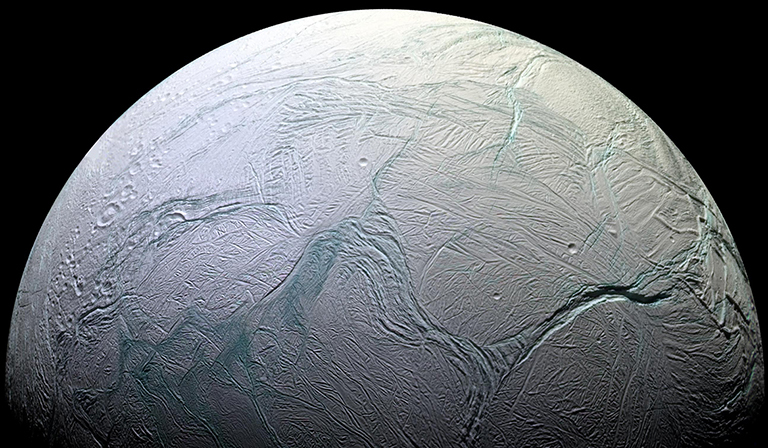Before it took its final descent into Saturn’s clouds, NASA’s celebrated Cassini spacecraft discovered jets of ice and saltwater gushing into space from cracks in the south pole of Saturn’s ice-covered moon Enceladus. This was a sign that the body contained a subsurface ocean that could potentially harbor life. Now, new analysis of Cassini data suggests those icy plumes contain complex organic compounds, which are the essential building blocks of life, reports the Washington Post. The findings, published Wednesday, rely on data collected by two Cassini instruments, the Cosmic Dust Analyzer and the Ion and Neutral Mass Spectrometer, as the spacecraft flew through Saturn’s outermost ring and the plumes of Enceladus. The molecules reported in the new study are “orders of magnitude” larger than anything that’s been seen before. There were stable carbon ring structures, known as aromatics, and also chains of carbon atoms linked to hydrogen, oxygen and potentially nitrogen. The study also suggests that the organics Cassini found are just small fragments of even big compounds.
“Put it this way, if they did all these tests and didn’t see these larger molecules, [Enceladus] wouldn’t seem to be habitable,” said Kate Craft, a planetary scientist at Johns Hopkins University Applied Physics Laboratory who was not involved in the research. “But these findings . . . are reason to say, ‘Hey, we need to go back there and take a lot more data.’ “
Thanks for reading InsideHook. Sign up for our daily newsletter and be in the know.


















